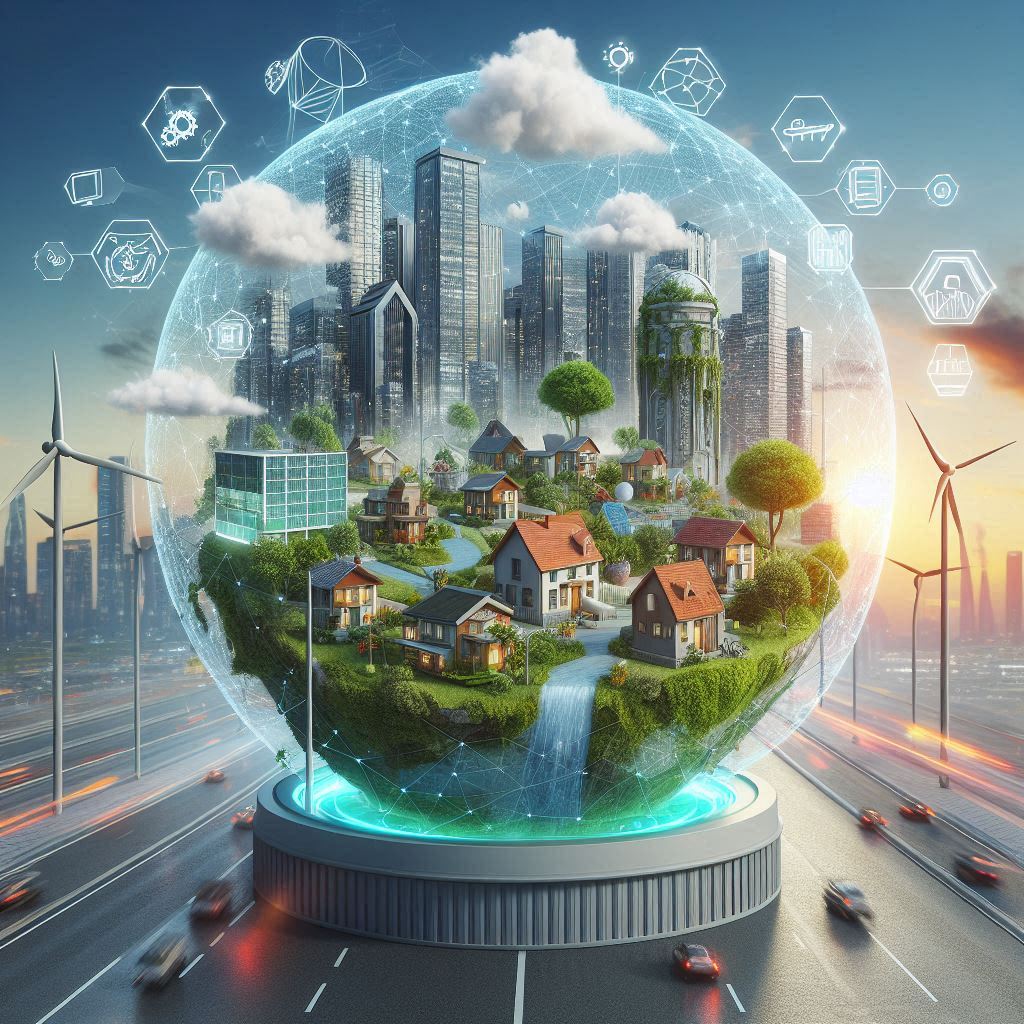Introduction
Building sustainable smart cities is essential for a greener future. As urban populations grow, cities must adapt to environmental challenges while enhancing the quality of life for their residents. In this blog, we will explore how to build sustainable smart cities and what you need to know to make this vision a reality.

Understanding Sustainable Smart Cities
A sustainable smart city integrates technology and sustainability to improve urban living. Moreover, this concept combines efficient resource management, innovative infrastructure, and community engagement. The goal is to create a city that is not only smart but also environmentally friendly.
Key Components of Sustainable Smart Cities
- Technology Integration: Firstly, Smart cities utilize information and communication technology (ICT) to enhance operational efficiency.
- Sustainable Practices: Secondly, these cities promote renewable energy, waste reduction, and green spaces.
- Community Involvement: Then, engaging citizens in decision-making processes ensures that the city meets their needs.
Understanding these components is crucial for anyone looking to contribute to the development of sustainable smart cities.
Why Sustainable Smart Cities Matter
As the world faces climate change, urban areas must lead the way in sustainability efforts. Here are a few reasons why sustainable smart cities are vital:
- Environmental Impact: Firstly, urban areas contribute significantly to carbon emissions. Sustainable practices can mitigate this impact.
- Resource Management: Secondly, efficient use of resources ensures that cities can support growing populations without depleting natural resources.
- Quality of Life: Then, focusing on sustainability improves air quality, reduces noise pollution, and enhances public health.
Recognizing these benefits motivates stakeholders to invest in sustainable smart city initiatives.
Steps to Build Sustainable Smart Cities
Creating a sustainable smart city involves several strategic steps. Here’s how you can contribute:
Step 1: Assess Current Infrastructure
Begin by evaluating existing infrastructure. Identify areas that require improvement or modernization. This assessment should include:
- Firstly, transportation systems
- Secondly, energy sources
- Then, waste management facilities
By understanding the current state of infrastructure, you can prioritize areas for development.
Step 2: Engage Stakeholders
Involve community members, businesses, and local governments in the planning process. Host workshops and forums to gather input. Moreover, this engagement fosters a sense of ownership among residents and ensures that their needs are met.
Step 3: Implement Smart Technologies
Integrate smart technologies into urban planning. Here are some examples:
- IoT Sensors: Firstly, use sensors to monitor air quality, traffic patterns, and energy consumption.
- Smart Grids: Secondly, implement smart grids for efficient energy distribution.
- Public Transportation Apps: Then, develop apps that provide real-time information on public transit options.
These technologies enhance operational efficiency and improve residents’ experiences.
Step 4: Promote Green Spaces
Incorporate green spaces into urban designs. Parks, community gardens, and green roofs not only beautify cities but also provide numerous environmental benefits:
- Firstly, improve air quality
- Secondly, reduce urban heat
- Then, enhance biodiversity
Creating more green spaces contributes to the overall sustainability of the city.
Step 5: Foster Renewable Energy Use
Transitioning to renewable energy sources is crucial for sustainability. Additionally, encourage the installation of solar panels, wind turbines, and other renewable energy technologies in both public and private sectors.
If you want to readHow to Navigate the World of Virtual and Augmented Reality: Key Information You Need to Know Click Here
Step 6: Develop Sustainable Transportation Options
Promote alternative transportation methods such as cycling, walking, and public transit. Consider implementing:
- Bike-sharing programs
- Electric vehicle charging stations
- Expanded public transit routes
These initiatives reduce reliance on fossil fuels and decrease traffic congestion.
Step 7: Monitor Progress
Establish metrics to evaluate the effectiveness of sustainability initiatives. Regularly assess progress towards goals such as reduced emissions or increased green space. This data-driven approach allows for adjustments as needed.
Learning from Successful Examples of Sustainable Smart Cities
Several cities around the world exemplify how to build sustainable smart cities effectively. Here are a few noteworthy examples:
Barcelona, Spain
Barcelona has implemented innovative solutions such as the “Superblocks” initiative, which restricts traffic in certain areas to promote pedestrian activity. The city also utilizes IoT sensors for air quality monitoring and waste management.
Amsterdam, Netherlands
Amsterdam aims to reduce CO2 emissions by 40% by 2025 through its Smart City program. The initiative includes deploying smart meters in buildings to monitor energy usage and creating co-working spaces to reduce commuting emissions.
Singapore
Singapore is known for its extensive use of technology in urban planning. The city-state employs a comprehensive approach that includes green buildings, efficient public transport systems, and active citizen engagement in sustainability efforts.
These examples demonstrate that with commitment and innovation, sustainable smart cities can become a reality.
Challenges Ahead: Sustainable Smart Cities
While building sustainable smart cities is essential, several challenges may arise:
- Funding: Securing financial resources for large-scale projects can be difficult.
- Technological Barriers: Integrating new technologies requires expertise and training.
- Community Resistance: Some residents may resist changes due to fear or misunderstanding.
Addressing these challenges requires collaboration among all stakeholders involved in urban development.
Conclusion
Building sustainable smart cities is not just an option; it’s a necessity for our future. By understanding the key components and following strategic steps, we can create urban environments that are both intelligent and environmentally friendly. Engaging communities, leveraging technology, promoting green practices, and learning from successful examples will pave the way for healthier cities.
As we move forward into an increasingly urbanized world, let’s commit ourselves to making our cities smarter and more sustainable for generations to come. Together, we can build a greener future where technology enhances our lives while protecting our planet.
